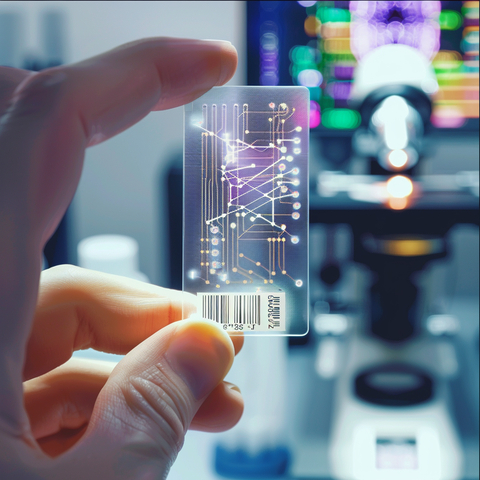Virchow’s scale is greater than any other pathology foundation model: Trained on 3 million pathology slides; from more than 40 different tissue types; Built on 1.8 billion parameters
Paige, a global leader in clinical AI applications for cancer, in collaboration with Microsoft, has unveiled the second generation of Virchow, its million-slide foundation model for cancer. As additions to Paige’s suite of foundation models, the world’s largest and most advanced AI models in clinical pathology, Virchow2 and Virchow2G offer a deeper understanding of cells and tissue, aiming to redefine cancer diagnosis and treatment.
This press release features multimedia. View the full release here: https://www.businesswire.com/news/home/20240808348827/en/

(Photo: Business Wire)
Built with a diverse dataset of over 3 million pathology slides from over 800 labs and 45 countries, Virchow2 and Virchow2G offer unparalleled data diversity and depth. Trained using de-identified data from over 225,000 patients, these models encompass a broad spectrum of gender, race, ethnicity, and geographical regions, providing a more holistic understanding of cancer.
This comprehensive dataset also includes over 40 different tissue types stained with H&E and diverse immune-stains (IHC), making it suited to a wider variety of applications. With an impressive 1.8 billion parameters, tripling the size of previous models, Virchow2G is the largest pathology model ever created. Trained in collaboration with Microsoft researchers and using Microsoft’s advanced supercomputing infrastructure, these models set a new record in AI training scale, surpassing previous performance standards, as showcased in a recently published technical report.
"Our collaboration with Microsoft has been pivotal in the development of Virchow, which has already earned recognition in Nature Medicine," said Thomas Fuchs, Dr.Sc., Founder and Chief Scientist of Paige. "We are merely scratching the surface of what these foundation models can achieve in transforming our understanding of cancer through computational pathology. Virchow’s immense scale unlocks key information that can be used to drive groundbreaking innovations, enabling precise diagnostics, targeted treatments, and personalized patient care. This is the beginning of a new era in oncology, where technology and science converge to combat cancer more effectively than ever before."
"This second generation of Paige’s Virchow model outperforms anything in the industry and continues to grow in knowledge and capability, bringing us closer to making precision medicine a reality," said Razik Yousfi, Senior Vice President of Technology at Paige. "We are not only expanding capabilities, increasing accuracy, and reducing time in the cancer diagnosis process, but also pushing the boundaries of what's possible. Our goal is to continue to bring the most advanced AI to pathology, leading to better patient outcomes and significant advancements in disease understanding and treatment."
Virchow Foundation Model Technology and its Impact on Cancer Today
To aid in the detection of cancer, Paige has used its foundation model technology to develop a universal clinical AI application for pathologists to aid in the identification and diagnosis of cancer across over 40 tissue types. Diagnosis can often be time-consuming and error prone, but AI can help the pathologist identify even rare cancers rapidly and accurately highlight each area of concern for further review by the pathologist, making it easier and more efficient for them to assess and reach a diagnosis. 1,2,3
Beyond cancer detection, and to better understand the genetic markers of cancer, Paige has also developed AI modules that serve as pre-built solutions for life sciences, pharmaceutical companies, and research entities. These modules enable precise therapeutic targeting, novel biomarker identification, and optimized clinical trial design. The result is more successful clinical trials, faster time-to-market for new therapies, and significantly enhanced R&D pipelines for pharmaceutical and life sciences organizations. By integrating these advanced AI capabilities, life sciences organizations can enhance research efficiency, uncover new insights, and drive innovation across various scientific disciplines.
These AI modules, which include Pan Cancer Detection, Pan Cancer Digital Biomarker Panel, and Cellular Analytics, along with Virchow2 and Virchow2G, are now available for commercial use. Virchow2 also joins Paige’s OpenPFM Suite on Hugging Face for non-commercial research purposes. For more information on accessing Paige's foundation model technology or to learn more about its applications, email bd@paige.ai.
About Paige
Paige uses the power of AI to drive a new era of cancer discovery and treatment. To improve the lives of patients with cancer, Paige has created AI technology and cloud-based platform that transforms AI development, pathologists' workflow and increases diagnostic confidence as well as productivity, all on a global scale. Paige is the first company to receive FDA approval for a clinical AI application in digital pathology. The same Paige technology empowers pharmaceutical companies to more effectively evaluate drug discovery.
---
1Eloy, Catarina et al. “Artificial intelligence-assisted cancer diagnosis improves the efficiency of pathologists in prostatic biopsies.” Virchows Archiv : an international journal of pathology vol. 482,3 (2023): 595-604. doi:10.1007/s00428-023-03518-5
2Perincheri, S., Levi, A.W., Celli, R. et al. “An independent assessment of an artificial intelligence system for prostate cancer detection shows strong diagnostic accuracy.” Mod Pathol 34, 1588–1595 (2021)
4Raciti, Patricia., Sue, Jillian., et al. “Clinical Validation of Artificial Intelligence Augmented Pathology Diagnosis Demonstrates Significant Gains in Diagnostic Accuracy in Prostate Cancer Detection.” Archives of Pathology & Laboratory Medicine (2022)
View source version on businesswire.com: https://www.businesswire.com/news/home/20240808348827/en/
Contacts
Cindi Goodsell | Stanton
cgoodsell@stantonprm.com
